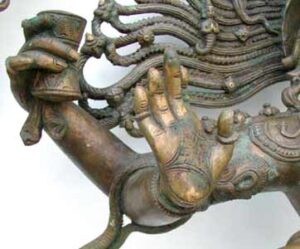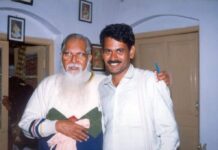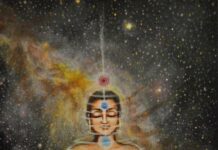
Dear Jeyamohan
“Shaivam” is an indispensable philosophy from the Indian tradition. Actually, Shiva is the philosophy itself. Even the epics have no conclusion without Shiva. All penances are forwarded to him in India. In the Ramayana, Shiva’s bow is broken by Janaka through penance. Don’t say Ravana, a devotee of Shiva. These are just a few examples. The list is much longer.
So, Shiva is the infinite Pranava at every age of humanity. Even those who dismiss all these as latter additions must accept ‘Shivam’ as param. He has attained the pivotal status of Linga in our culture. That mad deity with dreadlocks is also dancing in all folk traditions (Sudalaiyadi -the pyre keepper, Thandavakon- the dancer).
He has been interpreted as the material form of ‘Para tatva’ mentioned in the Vedas. Every cult here is a form of worship for him or a culture based on him. Until today’s Adhiyogi. He is the one. (The Ultimate/ultimum). Even after this, he takes many forms anyway.
Is such philosophical transformation or absorption present in any other culture? Is there anywhere like this where a vision evolves as philosophy, culture, and lifestyle for various kinds of people in different ways? What is the final vision we should reach through this?
Narayanan
Tirunelveli
Dear Narayanan,
An interesting irony in your letter strikes me first: you write about Shiva with the name ‘Narayanan’.
There is one thing I would like to know first. Why are you so obsessed with Shiva? If you are approaching Shiva as a devotee, there is no need to study how the images of Shiva arose and how their variations permeated all over the world. That kind of thought itself is distracting and blocking the path to salvation, according to Shaivite doctrine.
What is there to be proud of to think that, ‘my philosophy is unique in the world’? Isn’t it a broader conscious to think that, ‘my philosophy is everywhere!’. To feel ‘Everything here is Shiva’, why are all these logics needed? Why is this historical analysis needed? (I won’t say this as pseudo-analysis because it is a kind of examining of a private dream). Adhere, admire, and meditate! Isn’t this the path of Shaivaism?
Well, if your goal is to become a research scholar of Shaivaite culture, this belief or attachment is quite the opposite of it. Research with personal attachment is not research; it is just prejudice. If you are a research scholar, Shaivism is only a subject for you, not a vision or way to salvation. You shall not rejoice in its glory or be sorry about its fall.
If you want to study Shaivism as a subject, there are a lot of books written by great scholars who have studied the Vedas and Shaivism meticulously and authentically. They explained Shaivsm’s growth and spread from the Rudram of the Vedas to the Shaiva Sidnanta of Meykandar in detail. There are texts that explain the combination of various forms of Shiva concept, like hill worship, phallus worship, fire worship, and Sivarutra worship.
There are certain objective methodologies to interpret symbols and images in spiritual philosophy. There are also ways to infer cultural evolution from history. Learn them. Various researchers can be considered, starting with Anandacoomarasamy.
After learning what they have to say, still you have a new idea to add, you can present your thoughts to the researchers on the platform for it. Your conclusions should be logically established in the peer-reviewed circle. Writers like me used to take ideas and facts only from that peer-reviewed circle.
The images you have are the side effects of mixing meditation (Dhyana) and idol worship (Vigraha Aradhana) in your inner mind. If you are following the way of worship (Bhakti Marga), you should not do meditation. The practices of Bhakti are totally different, from simple home worship (Aradhana) to systematic temple worship (Kshethra Darsana). That system has well-distinguished customs and practices.
If you are following the way of meditation, you should adhere to the two known methods: one is the yoga way of Padanchali, and another is the way of Tantra, i.e., chakras. Both have their own methodology and strict rules. You must have a direct guru to practice these two meditation methods.
According to Bhakti tradition, what you are doing is dragging your intellect into the simple emotion of devotion. It is an error; it will eventually boost your pride, and you will end up as a sinner, thinking that you are a scholar and, with your knowledge, you are defending your god. A man with pride (Ahangara) can’t attain the state of complete surrender, which is the basic need of a worshipper.
According to yoga tradition, you are pouring water onto the millions of seeds hidden in the desert of your subconscious. Meditation is entirely opposite to what you are doing. Meditation teaches to regulate your inner mind and eventually make it singular and null. Meditation is a practice to stop mental activity (Chitta Vruti), and here you are proliferating it.
You can be a good Shaiva devotee or a Shaiva scholar. But the emotions and ideas you are having right now have no meaning on both paths. This kind of pride can easily lead us to religious pride. It will make us religious fundamentalists who are involved in silly religious quarrels. Fundamentalism is the primary harm we get from religion.
Jeyamohan
Translated by Sivaraj












